Improve Reading Comprehension
Do you need to improve reading comprehension? Is it at the top of your list of things-I-need-to-teach-better? It was always on mine, too! Let me give you a scenario in which you are probably all too familiar:
You have a reading curriculum that you are obligated to follow. It comes with a Teacher’s Manual that prescribes one-size-fits-all instruction that you are supposed to deliver. Sometimes, if you’re lucky, it includes options for differentiating (in the form of a one-liner a.k.a usually not helpful).
The Teacher’s Manual attempts to teach reading comprehension by including comprehension questions for each reading selection and/or prescribing a skill or strategy (which they are not the same, but more on that later) that is to be taught or used with the reading. This skill or strategy may or may not be applicable for use with the reading selection (insert eye roll) or even applicable to your students (as in, they don’t need it).
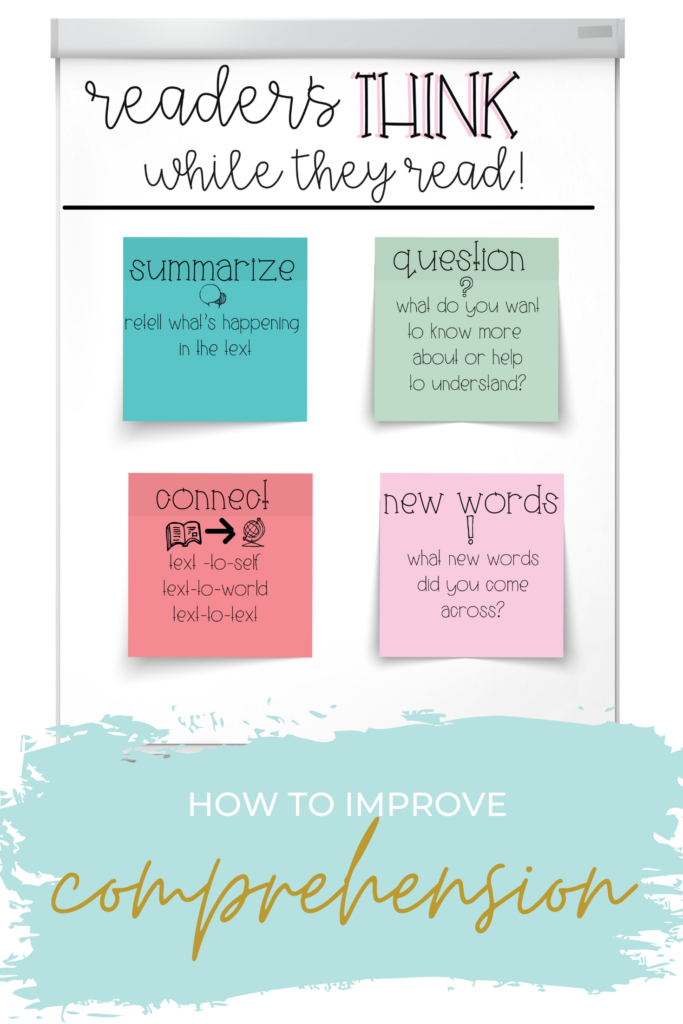
Furthermore, let’s also mention the fact that the Teacher’s Manual often does not provide you with solid actionable steps to teach the reading comprehension skill/strategy in a way that will help students internalize it and be able to use it effectively.
Can you relate?
Does any of this sound familiar? Are you nodding your head profusely? Now, all of this is not to say that all teacher manuals are created equal- they are not. Nor, is it to say that you shouldn’t use the Teacher’s Manual- you should. By using the Teacher’s Manual as a reference, and for some content, you can still improve reading comprehension for your students. One of my favorite mantras is, “Use the standards (CCSS or your state standards if different) as your main guide, your north star, and the teacher’s manual as a tool,”.
Reading comprehension skills vs. strategies
First and foremost, before we go any further in this post, let’s define the difference, once and for all (okay, it probably won’t be once and for all), between a comprehension skill and a comprehension strategy. Many scholarly debates have been had on this topic! Has it kept you up at night? Just me?
Comprehension skills
First of all, the term comprehension skill has been mostly made up by curriculum companies to refer to abilities to answer certain types of comprehension questions like main idea, drawing conclusions, comparing/contrasting, and sequencing events. There is hardly any research-based evidence that proves they can be taught in a way to actually improve a student’s reading comprehension (Shanahan on Literacy, 2018). What?! Is this blowing your mind right now? It should be!
Comprehension strategies
On the other hand, reading comprehension strategies do have a long track record of being able to directly improve reading comprehension when they are taught well. When we refer to comprehension strategies, we are talking about summarizing, inferring, questioning, monitoring, clarifying, and visualizing (not an exhaustive list).
Comprehension strategies require active moves on the part of the reader and are direct thinking patterns and actions the reader needs to take in their mind, as they are reading. Teaching strategies will directly improve comprehension.
So there. Now you know the difference and you shall forevermore go forth spreading the good word!
Strategies for reading comprehension
Now that we know we should be teaching reading comprehension strategies, how do we teach them? Research says through a gradual release of responsibility model using direct instruction.
In other words, the teacher takes ownership of using the strategy first and then g-r-a-d-u-a-l-l-y transfers that ownership to the student(s). A true gradual release model is more than “Teach, Practice, Apply” or “I do, We do, You do” although those can certainly be applicable as part of the larger scope of the process.
In addition, we want to be sure to teach the comprehension strategies that our students are lacking. The strategies that will move them forward and allow them to read more complex text or that will help them read grade-level text are what we should teach- and that, my friend, will be specific to individual readers.
How to teach reading comprehension strategies
We are not going to teach a strategy for the sake of teaching a strategy. The goal is to use the strategy to be able to comprehend the text. If the student can comprehend the text, move on! This is where informal assessment comes in and can be as easy as conferring one-on-one with a reader. Ask a few probing questions. Ask the reader to talk about the story. Listen to what the reader is/isn’t saying. “Read” between the lines. This will help you identify the next steps. Don’t discount conferring- it can provide a wealth of information and be a valuable roadmap!
Teaching the strategies
So, if you have a 5th grade student that cannot retell or remember what they read, you are going to teach them the reading comprehension strategy of summarizing and you are most likely going to have to scaffold, so they can practice the strategy authentically in a complex text.
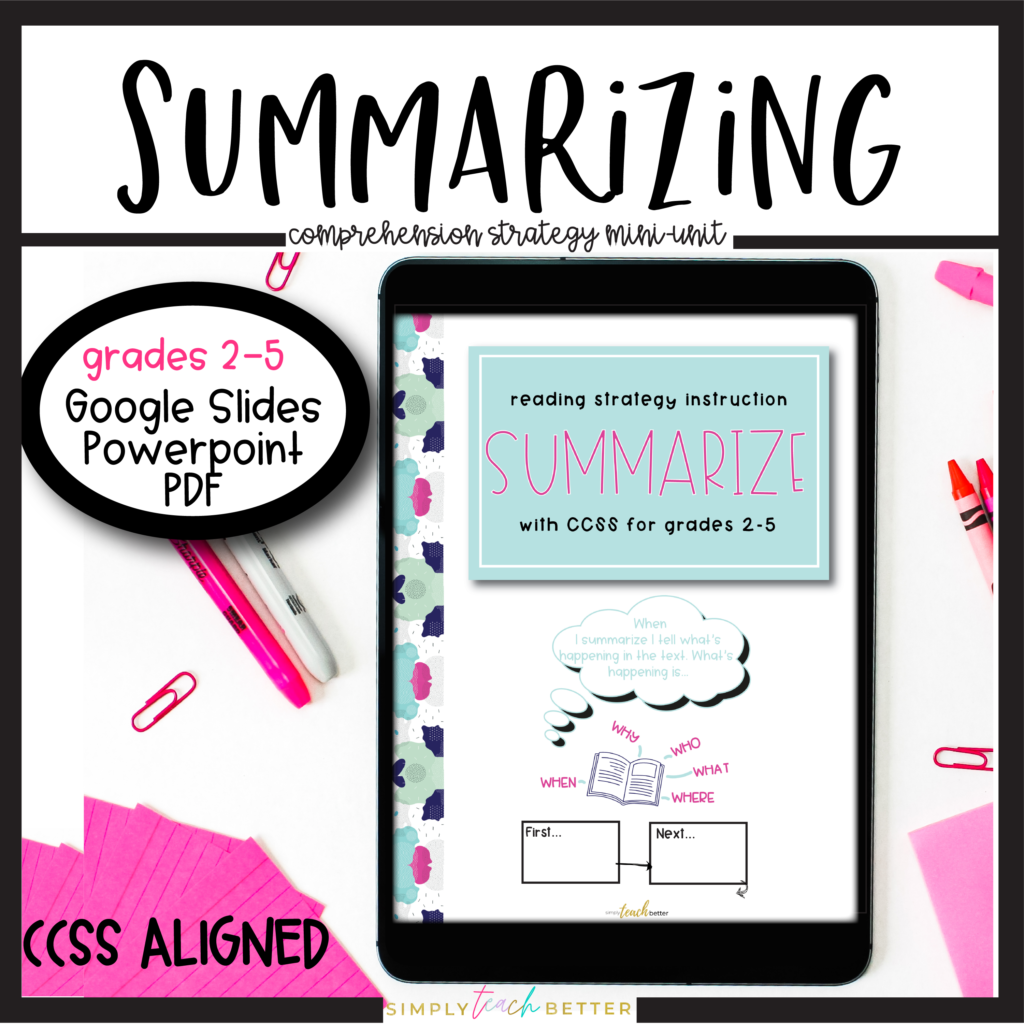
Additionally, if you have a student who can only retell the literal happenings of the story, and cannot evaluate the overall meaning or purpose, you are going to have to work on inferring. You will teach the reader to infer what the author or characters aren’t directly saying or doing.
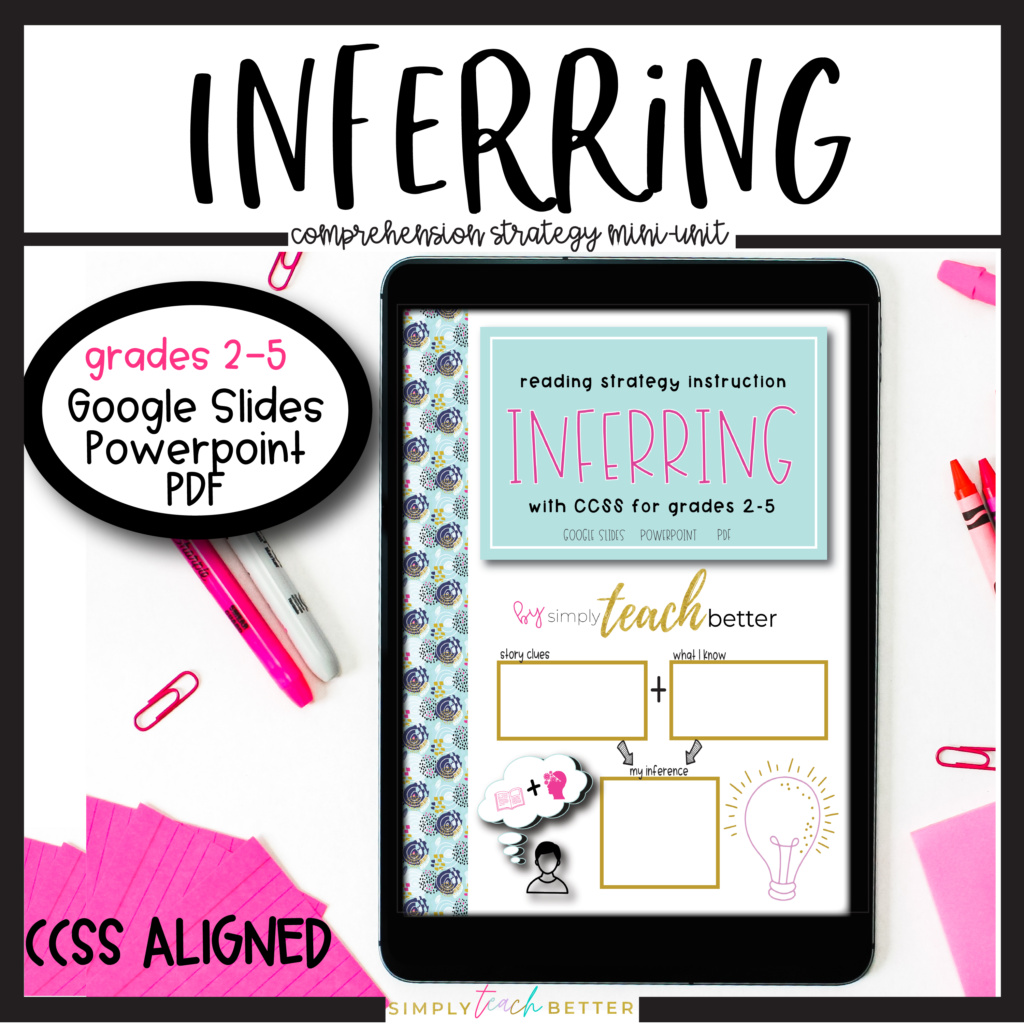
By the way…
Side note….inferring, making inferences, drawing conclusions, predicting- All require the same mental action steps. The reader has to use text clues and prior knowledge to figure out the deeper meaning of the story. So, let’s stop calling this skill/strategy different names, confusing our readers, and pretending they are all different. They. Are. Not.
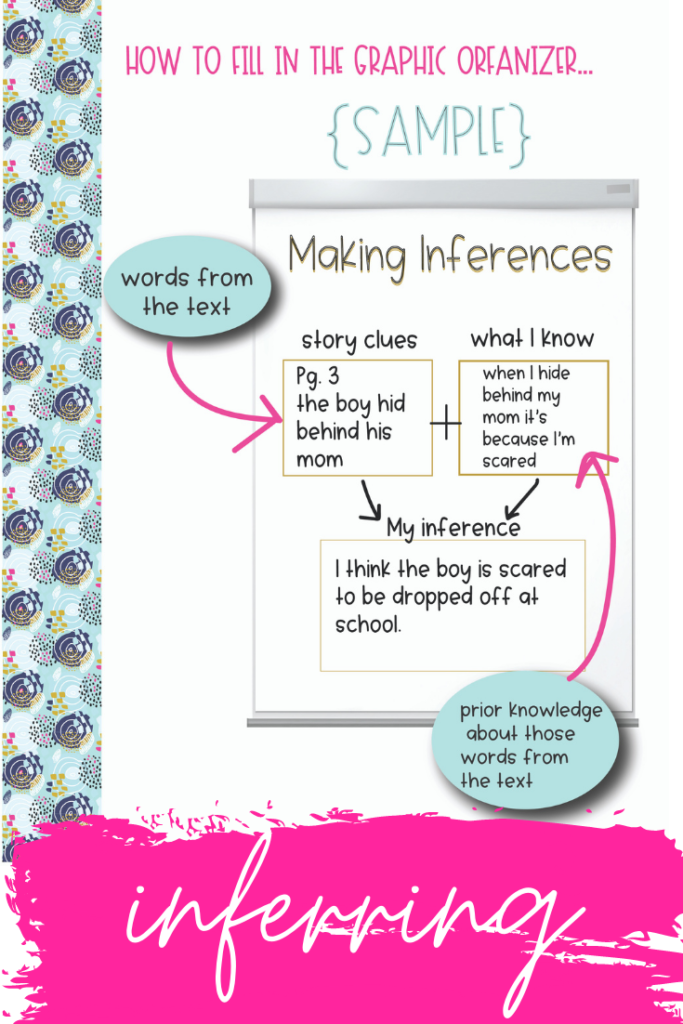
Similarly, if you have a student who doesn’t realize when they lose comprehension, your first step is to teach them how to self-monitor.


There are, of course, many other reading comprehension strategies you may need to teach your readers. Remember to be strategic! Find out what strategies will help move them forward and teach those using direct instruction!
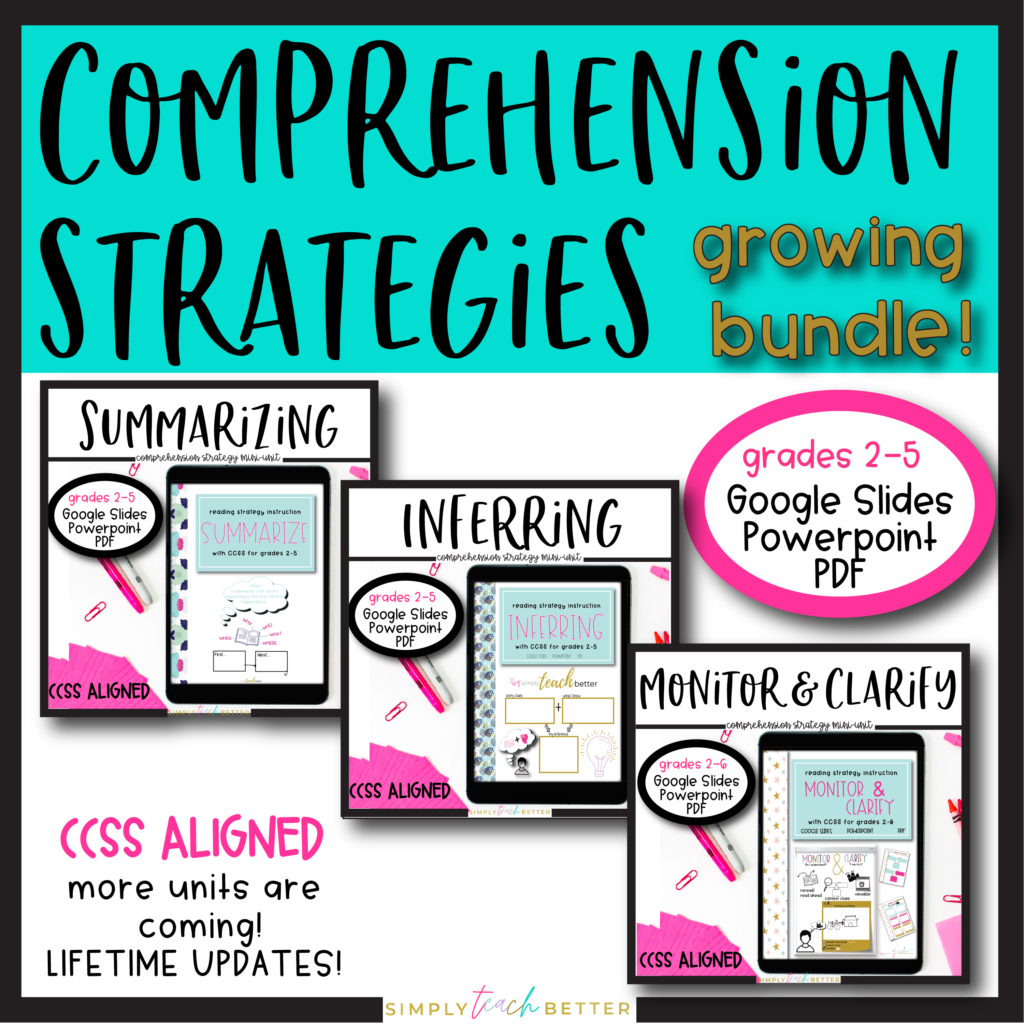
Using graphic organizers for comprehension
When teaching reading comprehension strategies, try to include the use of a graphic organizer or anchor chart. Including these as a tool, greatly enhances the understanding of the thinking moves that the reader needs to take. In other words, it helps make an abstract concept visible and not-so-abstract.
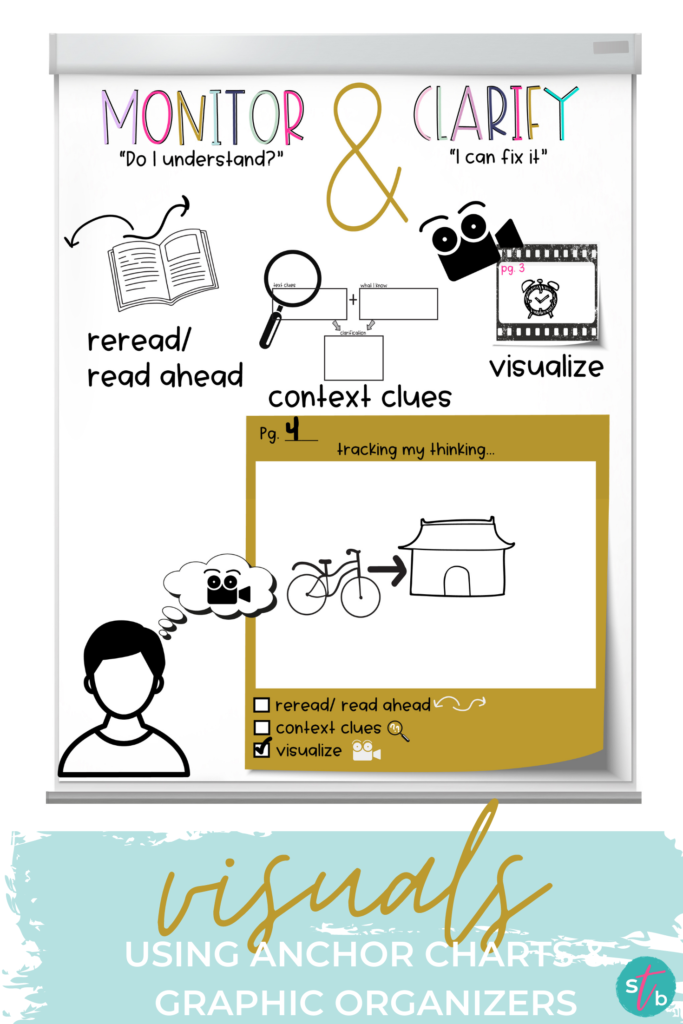
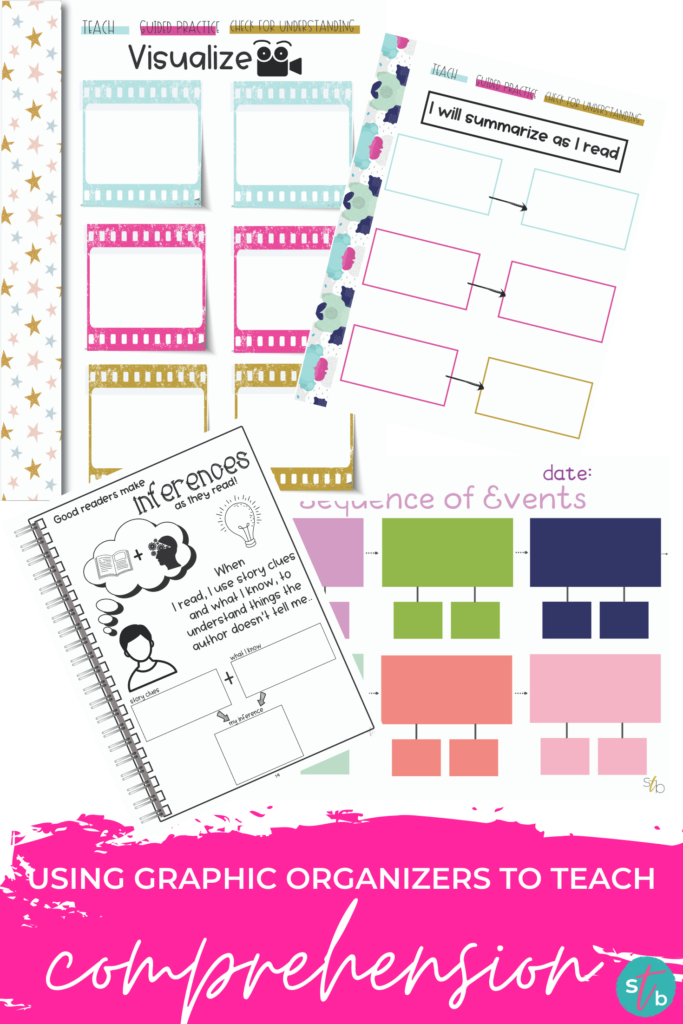
However, make sure the graphic organizer lends itself to the comprehension strategy you are teaching, and doesn’t make it more difficult for the reader. For example, when teaching students a fix-up strategy of rereading/reading ahead when they need to clarify, you may not want to include a graphic organizer because the mental process, or thinking moves, the reader will take to apply that strategy, doesn’t lend itself to a chart or organizer. It will end up confusing the reader and making the task difficult. Always ask, “Does this chart or graphic organizer make it easier for the reader to apply the strategy?”
Reading comprehension questions and their purpose
Lastly, let’s chat briefly about the purpose of comprehension questions. You know, the ones in your Teacher’s Manual used to “teach comprehension”. Also the passages/questions published by many curriculum companies and online platforms you find when you google “teaching comprehension”? Those.
Comprehension questions that come before, during, after a passage/text/chapter etc do not TEACH the student to comprehend. They MAY assess the reader’s comprehension, but they certainly do not teach the reader how to comprehend.
So, what’s the purpose?
There is definitely a purpose to using comprehension questions, but it is not to teach comprehension or comprehension strategies. You may use them to assess how deeply a reader comprehends, what they did/didn’t, and their reading level when used in conjunction with other measures.
Additionally, reading comprehension questions can also be used to teach a variety of skills like finding evidence in the text, close reading skills, and preparing students for standardized tests.
Always make sure you are teaching comprehension strategies and not using reading comprehension questions for this purpose!
As always, know better, teach better
As you know, improving reading comprehension is multi-faceted and non- linear. Is it difficult to teach? Yes. But is it possible? Also, yes. The research points to using reading comprehension strategies as the means to accomplish this. They are the roadmap.
When we know better, we teach better.


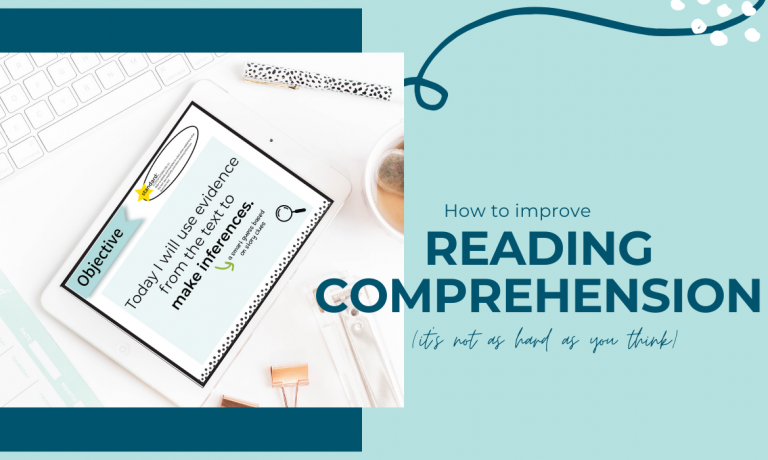
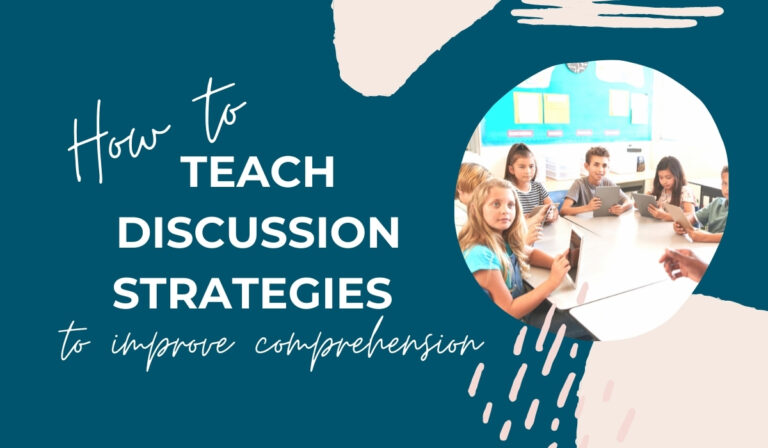
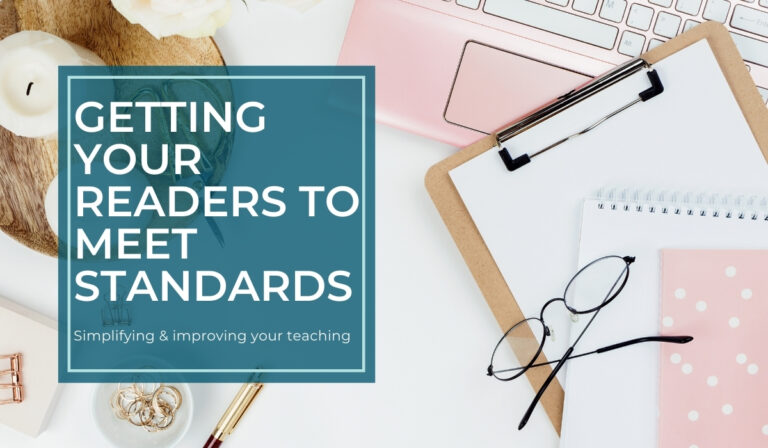
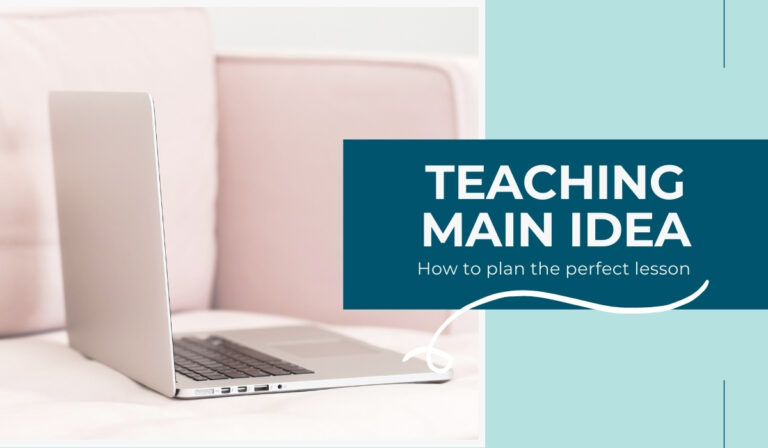

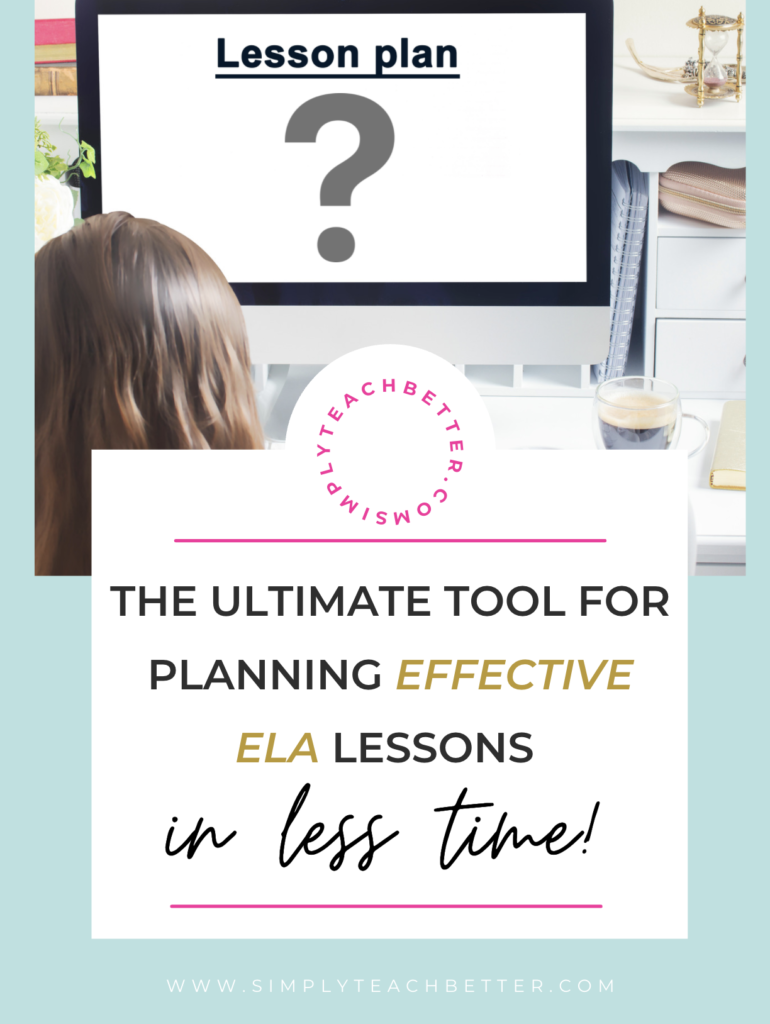
2 Responses
This makes so much sense! I love the way you made something so complex easy to understand! Thank you!
I’m glad you found it helpful! Thanks so much!